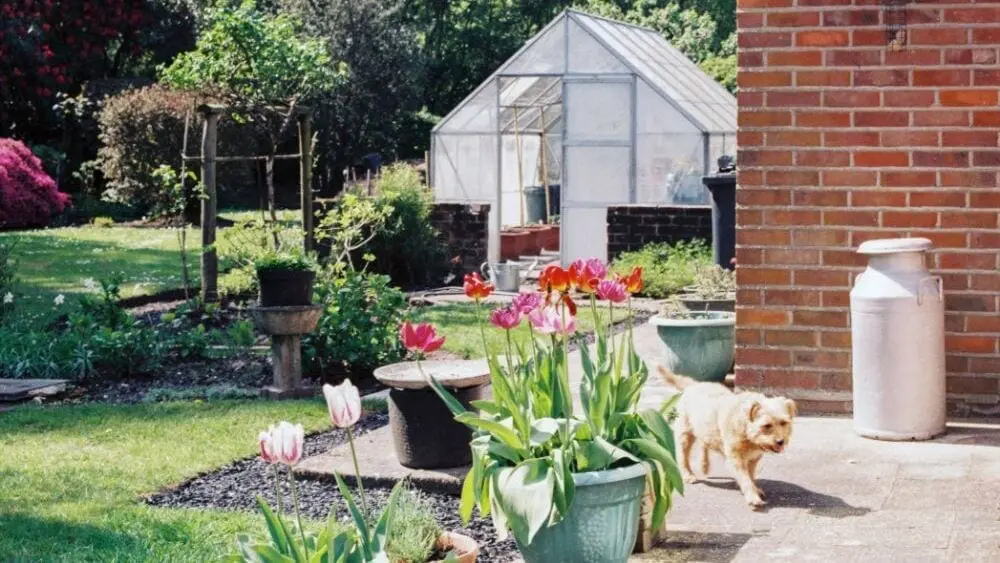
Not everyone thinks about it, but you should put just as much work into designing the exterior and landscape of your home as you do the interior. This is even more important for pet owners and animal lovers — a few intentional choices can transform your backyard into an outdoor oasis for all kinds of critters.
What Plants are Good for a Yard?
No matter what design you decide on, you’re going to be making use of plant life; even xeriscape designs typically involve some form of greenery. When planning a yard space specifically with animals in mind, it’s important to familiarize yourself with which plants are toxic versus safe and which plants have multiple uses.
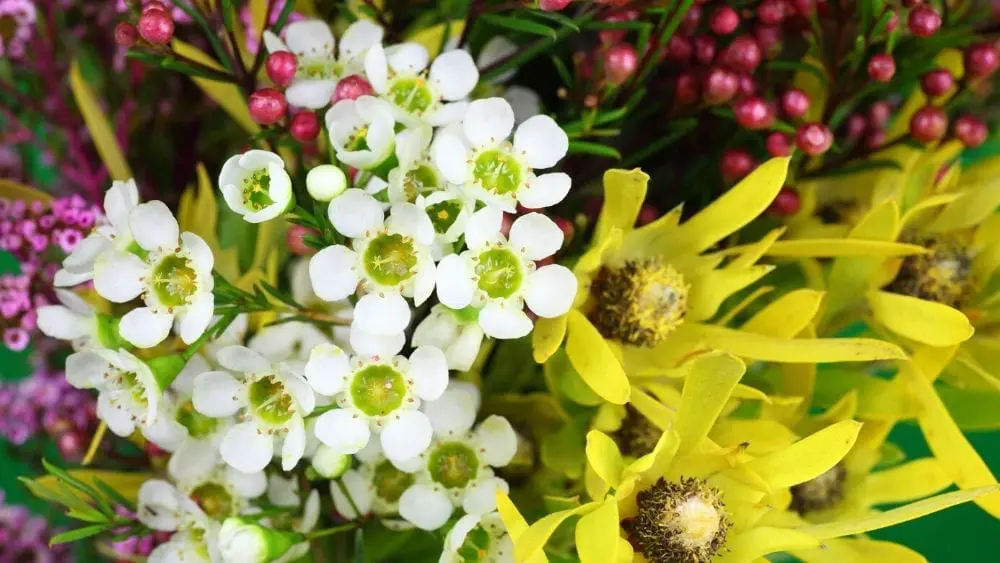
For example, the bright colors of flowering lilies make them quite popular, but they are highly toxic to cats. Not a fan of mosquitoes in the summertime? The citronella plant is a strong natural repellant but is poisonous to dogs. Consider instead lavender or mint — both are natural bug repellants and are far less dangerous for pets, and lavender adds lovely color to your yard. If you have cats, catnip works as a cat repellent that is also safe for them to ingest (in controlled, small doses!).
If you’re interested in planting flowering plants for the visual beauty they bring, look for ones that local wildlife will also appreciate. Consider planting a bee and butterfly garden that is inviting to pollinators. Bee balm, sunflower, sage, nasturtium, and borage are all beautiful flowering plants that bees love. Again, if you have pets, make sure any pollinator-friendly plants are also fine for your dog or cat. And don’t forget to check your local bird population and what plants they might enjoy, or consider setting up a bird feeder.
You can also think about feeding yourself and your family. Having a fruit-bearing tree is a great way to spruce up a yard while still being functional, as is growing common herbs such as rosemary, oregano, and basil. Pro tip: Grow these herbs on a windowsill for easier access and to keep them away from any curious animals who might get sick from eating too much.
Transform with Hardscaping
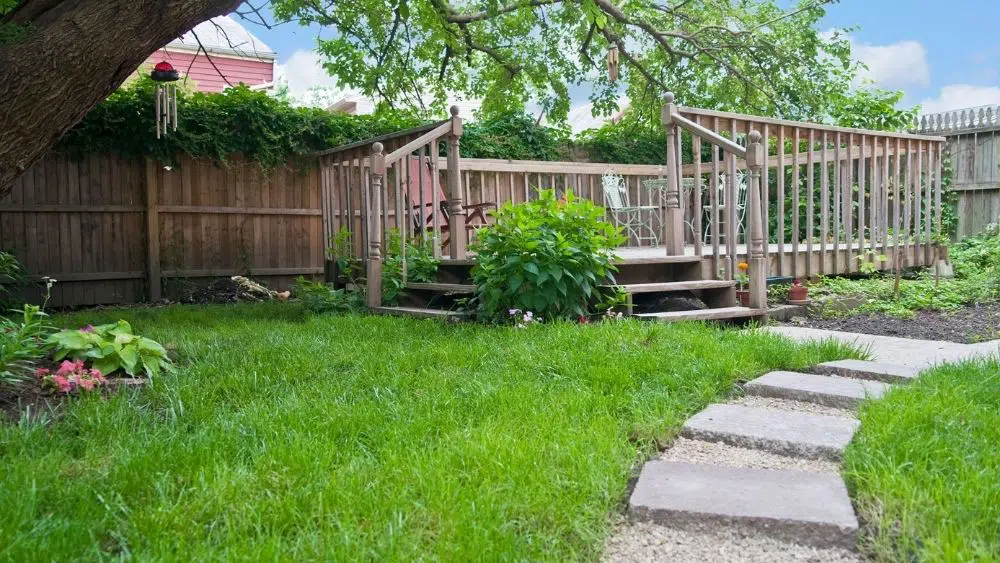
Of course, it’s not just plant life that makes up a backyard. Hardscaping (human-made features added to a landscape) is often part of creating the ideal outdoor space, and which hardscape options you use can affect your pets and the surrounding critters in a lot of ways.
Let’s think about the ground first. Have you ever stepped on concrete that’s been baking under the hot sun all day? Hurts, right? It’s the same for animals! Help protect their feet by building with softer materials, such as stone or mulch, for both your patio and any paths throughout your space. Having a natural or man-made shade above the patio will also help to keep it cool on hot summer days.
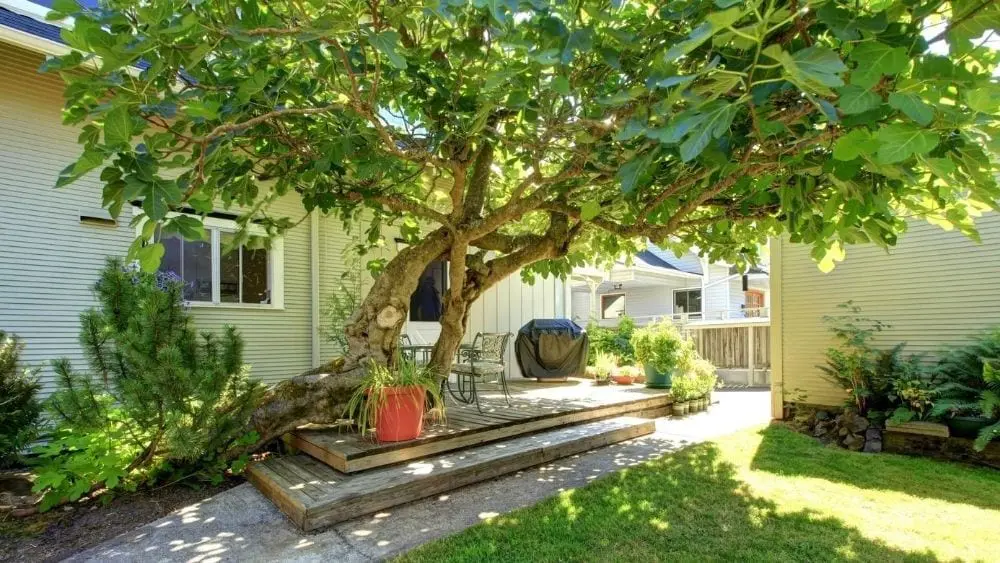
Regarding shade, make sure that you have sufficient coverage for pets during extreme weather. This can take the form of a “catio” or outdoor cathouse for your feline friends, or a doghouse for the pups. You can also think about bee and bug hotels to help promote local wildlife and a birdhouse to give feathered friends a safe place to land. While some of these creatures can get by during intense weather, be sure to never leave your cat or dog outside if you wouldn’t also be comfortable out in it; this means extreme heat and cold, as well as storms and other inclement weather.
Additionally, consider adding some sort of water feature to your yard. Not only are fountains and streams calming to be around, but they can also serve as a source of drinking water for critters. Of course, you’ll want separate access to water for any indoor pets, and if you do have an outdoor water feature, make sure your pets are protected from taking an unexpected swim. You could isolate the feature on one side of your yard or add some rocks or other natural obstacles to prevent a curious pet from getting into it. If you decide to include a water feature, be sure that the water has a constantly moving source to discourage mosquitoes from laying eggs in the water. If you have a bird bath with standing water, be sure to change the water regularly to prevent mosquitoes and algae from laying claim.
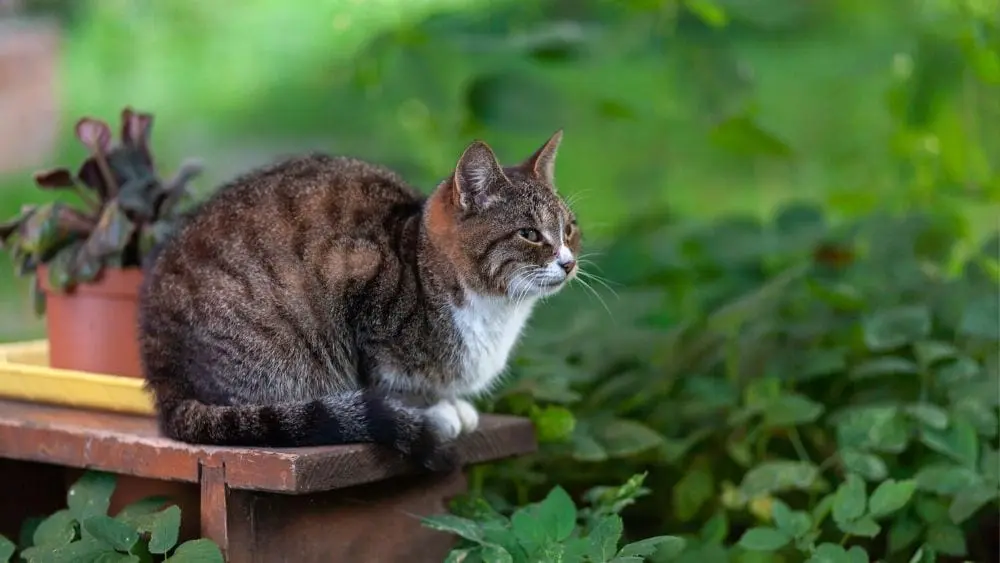
Finally, don’t forget about fencing and a gate. This is important for anyone with pets, as it will keep them from becoming escape artists, but it’s equally important to keep some other critters out of your space. Anything that may be a predator to you or your pets will, at the bare minimum, have to pause at a fence; in fact, most will see the deterrent as enough reason to keep moving. Regularly check your fence line for gaps in the wood or loose planks, and be sure that your gate has a proper locking mechanism. Use preventatives that meet your specific needs: If family members routinely forget to shut the gate, perhaps put it on a self-closing system. Or if you have a dog that enjoys digging, perhaps line the bottom of your fence with chicken wire to keep your dog safe.
The Ultimate Pet-Friendly Yard
One of the best benefits of having a yard is getting to engage one-on-one with nature. Learn about the world around you, support the local wildlife and keep your family (including pets!) safe with these practical tips and gear so you can enjoy your new yard without concern. Feeling inspired to find your new home so you can create the ideal nature getaway? Head over to NewHomeSource for local listings, resources, and plenty of inspiration!

Kian Zozobrado joined Builders Digital Experience (BDX) in 2019 as a content writer. A graduate of Southwestern University with a degree in English, Kian is passionate about the written word and making connections. Outside of work, Kian also serves as president of the Board of Directors for the Writers’ League of Texas.
 Emergency Preparedness for Homeowners
Emergency Preparedness for Homeowners